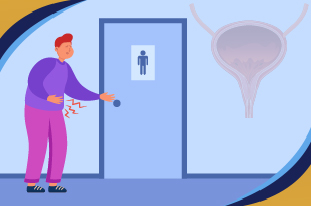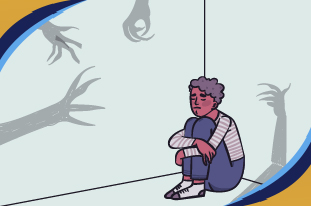The avoidant attachment style is one of the four categories of adult attachment styles in psychology. It doesn’t lie in the category of disorder or disease. It is a copy mechanism that is developed in early childhood. To deeply understand what is an avoidant attachment style? You need to dive deep to understand emotional distance. It is defined as emotional distance or closeness of vulnerability. It keeps you away to forming close bonds in relationships. Let’s further discuss how this can impact relationships or how people use it to protect themselves for their emotional safety.
How Avoidant Attachments Develop In Childhood:
Children want attention when they are growing up. It is important to understand how emotional unavailability can shatter a child’s personality. Their emotional needs shaped their adulthood. Therefore, emotional intimacy brings peace and safety for children. Otherwise, intensity or emotional closeness sets the child apart from their family. Due to unmet emotional needs, a child might learn that seeking emotions cannot comfort their feelings. Moreover, if we see what causes avoidant attachment, we can observe from the person’s childhood era whether it was abusive or not. The neglect of a child’s emotional needs can also be the reason for an avoidant attachment style.
Read More: The Positive Impact of Mental Health Awareness Color
Common Traits Of People With Avoidant Attachment Style:
It is also known as dismissive avoidant attachment. It is defined as avoiding emotional closeness towards their partner. You can discover the following traits of avoidant attachment that need to be addressed.
- They avoid expressing their emotions towards their partner. This way, they avoid communication to resolve conflict or what’s hurting their partners.
- They fear depending on others. This can make them feel uncomfortable sharing their vulnerability. They don’t initiate or encourage to development relationship due to the fear of rejection.
- They can avoid the relationships that are even beneficial for them. They can distress themselves for not relying on others.
- Their high value self-reliance makes them isolated. They might think closeness or attachment to others is weakness. Therefore, they might feel uncomfortable while seeking affection.
How Avoidant Attachment Style Affects Romantic Relationships:
The person with avoidant attachment struggles with expressing their emotion or feelings. In addition to this, people who don’t develop secure relationships in their childhood are likely to develop insecure avoidant attachment in their adulthood. However, people with this attachment style may behave due to unwanted stress or trauma. Moreover, people with insecure attachment style behave in that particular way as they haven’t gotten access to a validating environment. Further, you can explore to see the struggle of people with an avoidant attachment style in meaningful relationships.
- They suffer from emotional intimacy. Emotional deprivation can stop them from developing a deep emotional bond.
- They can get offended or bored when their partners seek affection or closeness.
- They suddenly break up or ghost their partners. They might need space from their partners.
- They may have a dismissive attitude toward their partners. They will dismiss the emotions of others. This attachment style can be linked to mood disorders that can become challenging for a person to express openly. Furthermore, people with bipolar disorder are likely to experience the symptoms of avoidant attachment style.
Read More: There’s Something About Disruptive Mood Dysregulation Disorder That You Should Know (DMDD)

Impacts On Friendships & Family Bond:
The avoidant attachment style can badly influence adult friendships. It shaped our adult friendships. Besides this, you can check out the following signs of an avoidant attachment style during crisis in expressing affection and empathy.
- They find it difficult to ask for moral support or help.
- They keep surface-level friendships.
- They might consider their friends clingy when they are trying to close them.
- They struggle to open up to others.
- They shut down when emotional conflict arises.
- They sabotage relationships. Moreover, this can happen due to fear of intimacy. Therefore, avoidant attachment style can be linked with panic disorder. The relationship or friendship challenges can fuel their anxiety, which can make them panic.
The Science Behind Avoidant Attachment Style:
The avoidant attachment style or theory was developed by John Bowlby. According to research, it can be linked to neurobiological factors. A person struggling with an avoidant attachment style has less amount in GABA. It can happen due to the brain stress response system. This can reduce the ability to manage intense emotions.
Furthermore, it can be a learned behavior from early childhood experiences. Avoidant attachment issues arise when caregivers do not meet children’s emotional needs. This can put them in trouble in forming healthy relationships in the future.
Read More: The Association of Panic Disorder with Agoraphobia
Therapy & Treatment for Avoidant Attachment Style:
Several therapies can be beneficial for an avoidant attachment style. Finding the right therapist or seeking professional help can play a significant role. Further, it will help them to develop secure relationships and to overcome emotional challenges.
Cognitive Behavioral Therapy:
Through this effective approach, an expert will help in determining the harmful patterns. They will examine the negative thoughts related to their attachment style. Besides this, a person can take psychiatric medication management. This will determine the underlying problems to heal their wounds.
Emotion-Focused Therapy:
It will help to understand the roots of problems. This way, you will be able to develop their bond. It will help a person manage emotional regulation skills. Besides this, avoidant attachment may lead a person towards depression. A person may feel worthless or lack empathy.
Attachment-Based Therapy :
It is a type of psychotherapy that helps a person form secure relationships. Moreover, people with avoidant attachment disorder suppress their emotions or needs to avoid emotional intimacy. Therefore, this effective approach helps people develop healthy communication skills. You can take the therapy via telepsychiatry. This way, you can easily share your relationship concerns from your comfort zone.
Inner Child Work:
The early childhood trauma experiences lead a person towards stress. To address the root cause of this problem, inner child work therapy works magically. This therapy provides a person with emotional support, safety, and validation that was deprived in their childhood. Furthermore, child and adolescent psychiatry with inner child therapy aims to reconnect a person’s younger self to heal their wounds.
Read More: Child Psychiatrist – A Guide For Parents & Guardians

Hope & Healing Towards Avoidant Attachment Style:
To have an avoidant attachment style doesn’t mean you don’t deserve love, compassion, or support. You can break down the avoidant attachment pattern with the right tools or therapies. You can raise awareness to understand the root cause of the problem. Consistency is the key; therefore, with the right therapies, you can move forward quickly towards recovery with Orange Coast Psychiatry. Every step towards vulnerability will lead you towards healing.
























